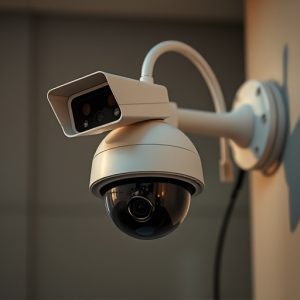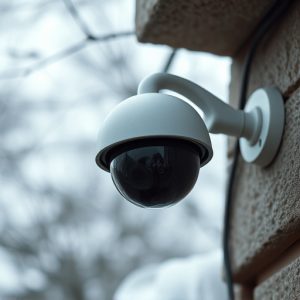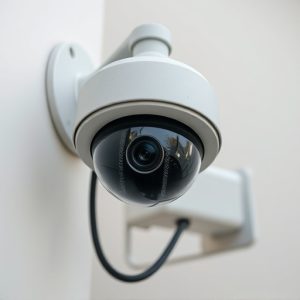Mastering Fake Camera Placement for Enhanced Home Security
Installing multiple fake security cameras is an effective strategy to deter crime by leveraging huma…….
Installing multiple fake security cameras is an effective strategy to deter crime by leveraging human psychology and trust in visual cues. Strategically placed, these cameras simulate a comprehensive surveillance system, creating a false sense of constant monitoring. This tactic is especially useful in high-risk areas, as diverse placements on various levels enhance the illusion of robust security, discouraging intruders while maintaining legality and ethical considerations through transparent communication. Regular maintenance ensures their plausibility over time, making it an affordable and powerful tool for crime prevention without extensive physical upgrades.
“Enhance your security with a strategic fake security camera placement strategy. This comprehensive guide delves into the psychology behind these devices, offering insights on maximizing deterrence through strategic location. Learn how to integrate real and mock surveillance equipment effectively while navigating legal considerations and ethical implications. Discover best practices for maintenance and upkeep, including installing multiple fake cameras for enhanced continuity in your deception strategy.”
- Understanding the Psychology Behind Fake Security Cameras
- Choosing the Right Locations for Maximum Deterrence
- Integrating Real and Mock Surveillance Equipment Strategically
- Legal Considerations and Ethical Implications of Using Fake Cameras
- Maintenance and Upkeep: Ensuring Continuity in Your Deception Strategy
Understanding the Psychology Behind Fake Security Cameras
The placement of fake security cameras is a strategic art, but understanding the psychology behind them is key to their effectiveness. Humans have an innate tendency to trust what they see, especially when it comes to surveillance. Fake cameras exploit this cognitive bias by providing a visual assurance of protection. Installing multiple fake security cameras in various conspicuous locations can create a false sense of security for potential intruders, making them think they are being watched. This psychological tactic is particularly powerful in deterring crime as it plays on the fear of being caught and exposed.
By simulating an extensive surveillance system, business owners or homeowners can significantly reduce the risk of burglary or theft. Conspicuously placing fake cameras encourages honest behavior, as individuals may feel they are constantly under observation. This strategy is especially useful in high-risk areas where real security cameras might be less feasible or visible. Installing multiple fake cameras with varying angles and positions will create an illusion of a comprehensive security network, leaving potential criminals second-guessing their actions.
Choosing the Right Locations for Maximum Deterrence
When designing a fake security camera placement strategy, one of the key objectives is to create an environment that discourages potential intruders. Installing multiple fake security cameras in strategic locations can significantly enhance deterrence. Positioning them near entry points like doors and windows, as well as in areas with valuable assets or sensitive information, sends a clear message that any attempted intrusion will be closely monitored.
The arrangement should aim to provide comprehensive coverage while maintaining realism. Spread out the fake cameras across different levels of your property—roofs, walls, trees, and even dummy camera boxes mounted on poles—to mimic a genuine security setup. This dense network not only deters intruders but also ensures that any suspicious activity is quickly noticed, giving you and your security team valuable time to respond.
Integrating Real and Mock Surveillance Equipment Strategically
Integrating real and mock surveillance equipment strategically is a key aspect of an effective fake security camera placement strategy. By installing multiple fake security cameras alongside genuine ones, property owners or business managers can create an illusion of enhanced security. This tactic not only deterrs potential intruders but also serves as a psychological barrier, making it harder for criminals to attempt unauthorized entry.
When deploying fake cameras, it’s crucial to place them in visible areas that mimic real surveillance points. These simulated devices should be realistic in design and placement, aligning with the patterns and configurations of genuine security equipment. Installing them near entry points, windows, and valuable assets can significantly boost the overall security perception while keeping genuine cameras hidden or less noticeable.
Legal Considerations and Ethical Implications of Using Fake Cameras
When considering a strategy for installing multiple fake security cameras, it’s crucial to balance effective deterrence with legal and ethical implications. While fake cameras can be an affordable deterrent for property owners, their use raises questions about privacy and potential deception. Legally, some regions have specific regulations regarding surveillance technology, including restrictions on the placement of mock or dummy cameras to avoid misleading individuals into believing they are under constant observation.
Ethically, using fake security cameras may foster a sense of insecurity among neighbors, especially if the devices’ purpose is not transparently communicated. It’s essential to respect the privacy rights of others and ensure that installing multiple fake cameras does not create an atmosphere of mistrust or invade personal spaces. Transparent communication and adhering to local laws are key considerations to navigate these legal and ethical complexities effectively.
Maintenance and Upkeep: Ensuring Continuity in Your Deception Strategy
The success of a fake security camera strategy relies heavily on consistent maintenance and upkeep, especially when employing multiple devices across various locations. Installing multiple fake cameras creates a more convincing deception, but it also requires ongoing attention to maintain their authenticity. Regular cleaning and adjustment ensure these cameras remain plausible, preventing them from becoming obvious fakes. Over time, environmental factors like weather exposure or physical damage can impact the integrity of the setup. Professional maintenance checks should be scheduled to inspect for any signs of wear, replace worn-out components, and re-align camera positions as needed.
A well-maintained network of fake security cameras disrupts potential intruders’ plans by perpetuating a sense of constant surveillance. Proper upkeep guarantees these decoys remain effective, deterring crime without the need for costly and extensive physical security upgrades. By prioritizing maintenance, property owners or managers can create an illusion of robust security, making their locations less attractive to would-be perpetrators.
While the strategic placement of fake security cameras can significantly deter criminal activity, it’s crucial to balance this with ethical considerations and legal boundaries. By integrating both real and mock surveillance equipment, property owners can create an effective deterrent while adhering to legal requirements. Regular maintenance ensures these measures remain effective, making it a valuable strategy for enhancing home or business security in today’s digital era. Installing multiple fake security cameras as part of this strategic approach can significantly increase visibility and deter potential intruders.


